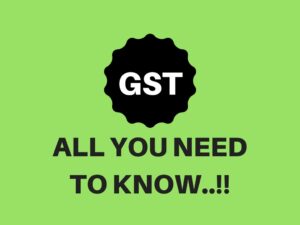GSTR 2A and GSTR 2B: Understanding the Differences
As a business owner or a GST taxpayer, it is important to be aware of the various GST returns and their functionalities. One such return is GSTR 2A, which plays a crucial role in the reconciliation process for Input Tax Credit (ITC) claims. Another important return to consider is GSTR 2B, which provides a comprehensive view of the eligible ITC available. In this article, we will explore the differences between GSTR 2A and GSTR 2B, their uses, and examples to gain a better understanding of these GST returns.
What is GSTR 2A?
GSTR 2A is an auto-generated return that contains the details of inward supplies or purchases that are auto-populated based on the information furnished by the suppliers in their GSTR 1. It serves as a reference document for the recipient taxpayer to verify the correctness of the supplies made by their suppliers.
Examples of GSTR 2A:
- Invoice number and date
- Taxable value of goods or services
- Applicable tax rates (CGST, SGST, IGST, or CESS)
- Amount of tax (CGST, SGST, IGST, or CESS)
Uses of GSTR 2A:
GSTR 2A serves several crucial purposes, such as:
- Verification of data between GSTR 2A and GSTR 3B
- Reconciliation of Input Tax Credit (ITC)
- Identification of missing invoices or discrepancies
- Assessment of supplier’s compliance
What is GSTR 2B?
GSTR 2B is another auto-generated return that provides a summarized view of the eligible ITC available for a particular tax period. It considers the details of inward supplies, including those received from suppliers, imports, and documents issued under the reverse charge mechanism.
Examples of GSTR 2B:
- Total ITC available
- ITC from imports
- ITC from documents issued under reverse charge
- ITC available from the supplier’s shared by Input Service Distributor (ISD)
Uses of GSTR 2B:
GSTR 2B is beneficial in various ways:
- Allows businesses to ensure that ITC claims are accurate and complete
- Helps in the reconciliation of ITC claims with suppliers
- Provides a summarized view of eligible ITC for a specific period
Differences between GSTR 2A and GSTR 2B:
| Difference Area | GSTR 2A | GSTR 2B |
|---|---|---|
| Source | Data from suppliers | Data from suppliers, imports, reverse charge, and ISD |
| Auto-generation | Auto-generated return based on suppliers’ GSTR 1 | Auto-generated return based on suppliers’ GSTR 1, GSTR 5, GSTR 6, and GSTR 7 |
| Frequency | Monthly | Monthly |
| Eligible ITC | Does not explicitly show available ITC | Provides a comprehensive view of eligible ITC |
| Consideration | Supplies made during the particular tax period | Supplies made during the particular tax period, including imports and reverse charge |
| Data validation | Recipient is responsible for validation and reconciliation | Data is auto-validated and considered reliable, but reconciliation is still recommended |
| Input tax credit | Helps in the reconciliation of ITC claimed in GSTR 3B | Provides a summarized view of eligible ITC for a specific period |
| Suitable for | Verification and reconciliation with GSTR 3B | Assessment and verification of eligible ITC availment |
| Includes | Invoices, debit notes, and credit notes | Invoices, debit notes, credit notes, and documents issued under reverse charge |
| Accessibility | Readily available after suppliers’ filing of GSTR 1 | Available after the 12th of the following month |
Conclusion:
While both GSTR 2A and GSTR 2B serve their unique purpose in the GST framework, they differ in terms of data sources, auto-generation, eligible ITC representation, and accessibility. GSTR 2A focuses on supplier data for ITC reconciliation, while GSTR 2B provides a summarized view of eligible ITC from multiple sources. It is essential for businesses to utilize both returns for accurate GST compliance and effective utilization of input tax credits.
People Also Ask:
Here are some common questions regarding GSTR 2A and GSTR 2B:
Q1: Is GSTR 2A auto-generated?
A1: Yes, GSTR 2A is an auto-generated return based on the suppliers’ GSTR 1.
Q2: What is the frequency of filing GSTR 2A and GSTR 2B?
A2: Both GSTR 2A and GSTR 2B need to be filed monthly.
Q3: Can GSTR 2B be used for reconciliation?
A3: Yes, GSTR 2B provides a summarized view of eligible ITC and can be used for reconciliation purposes.
Q4: How do GSTR 2A and GSTR 2B differ in terms of data sources?
A4: GSTR 2A considers data only from suppliers’ GSTR 1, while GSTR 2B includes data from suppliers, imports, reverse charge, and Input Service Distributors (ISD).
Q5: When is GSTR 2B available for taxpayers?
A5: GSTR 2B is available after the 12th of the following month, providing a comprehensive view of eligible ITC.
By understanding the differences and functionalities of GSTR 2A and GSTR 2B, businesses can stay compliant with GST regulations and maximize their input tax credit claims.


